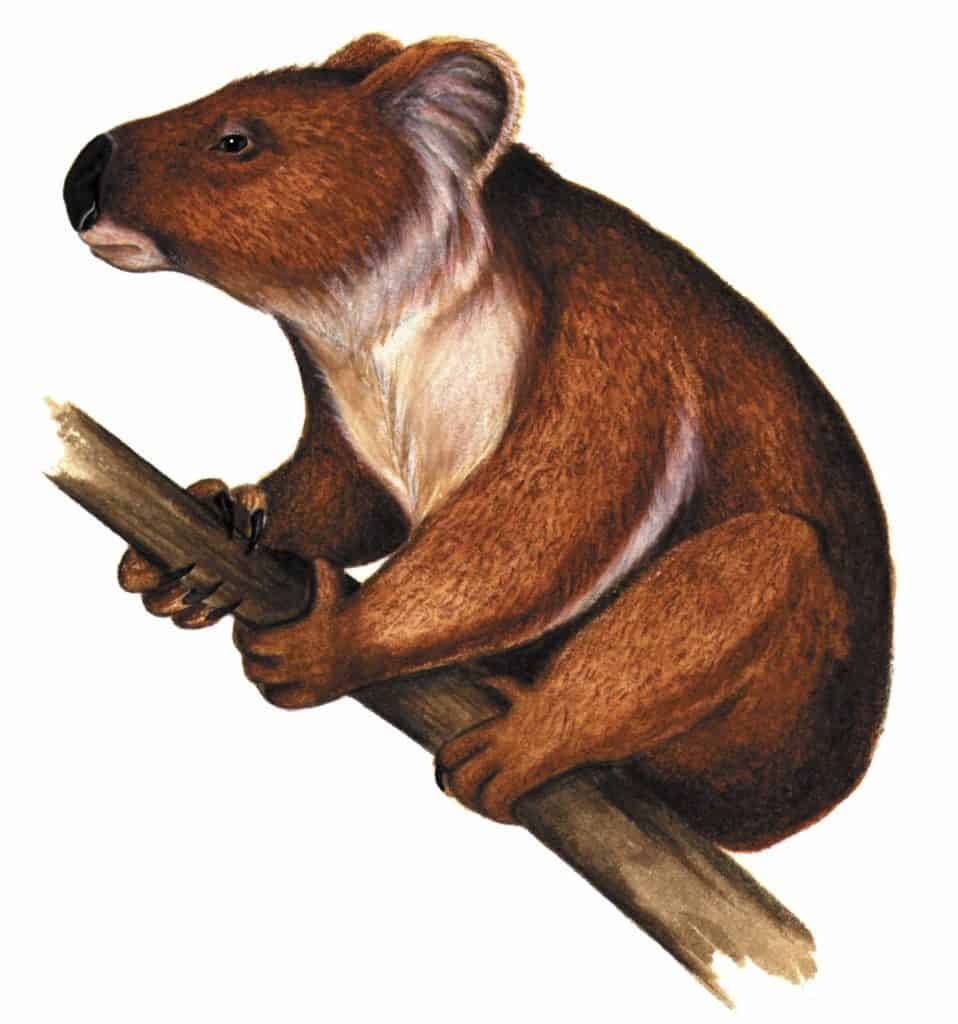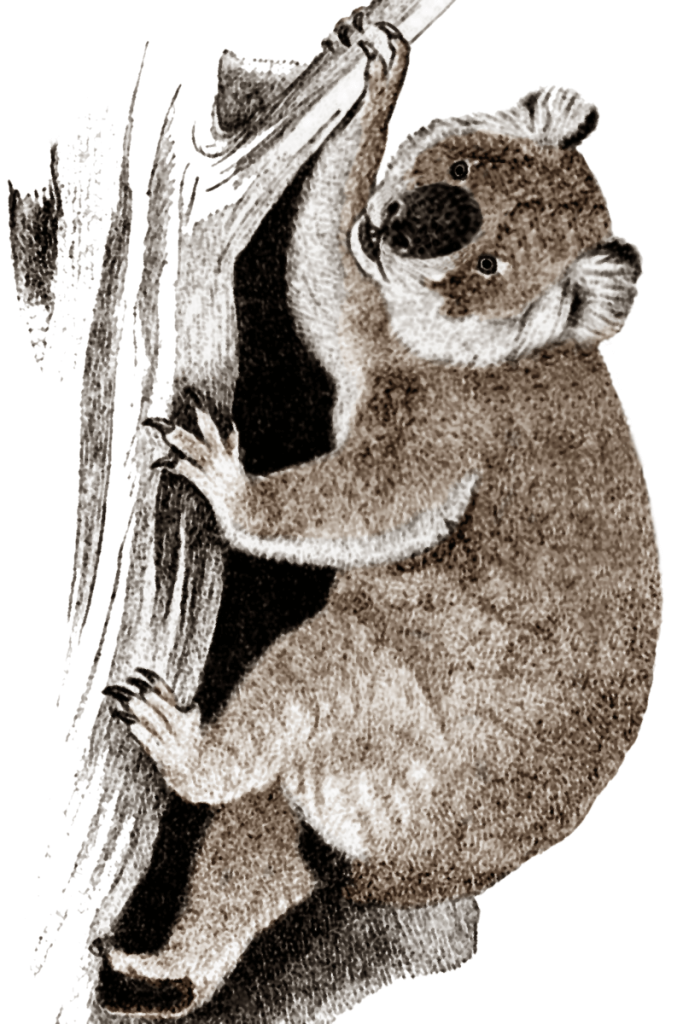Koala History
Koala-like animals probably first evolved when Australia began to drift slowly northward, gradually separating from the Antarctic land mass some 45 million years ago. Fossils of several extinct species of koala like animals were found on the Australian continent dating back to 25 million years old.

The first arboreal koalas descended from a terrestrial wombat-like ancestor, possibly to take advantage of a food resource not being utilised by others. There were once several different kinds of koala, all but one of which had died out. The earliest known member of the koala family was a browser that lived 15 million years ago. Evidence of a ‘giant’ koala, twice the size of its modern descendant, exists in fossils dating back more than 40,000 years.
Although there is fossil evidence of the koala in Western Australia’s South West, until the late Pleistocene age, they are not native to Western Australia. Fossil records indicate that many years ago, the koala also inhabited parts of the Northern Territory. The climate and vegetation were substantially different in those states at that time. However, there are no fossil records of koalas ever living in Tasmania.
The word ‘Koala’ is thought to have come from an Aboriginal word meaning ‘no drink’ because in the past koalas obtained most of the moisture, they needed from gum leaves. As bioperturbers, koalas played a critical role in maintaining the ecosystem health of the whole environment. They had their place as ‘eucalypt mowers’, as nutrient providers and as prey to a variety of carnivores.


